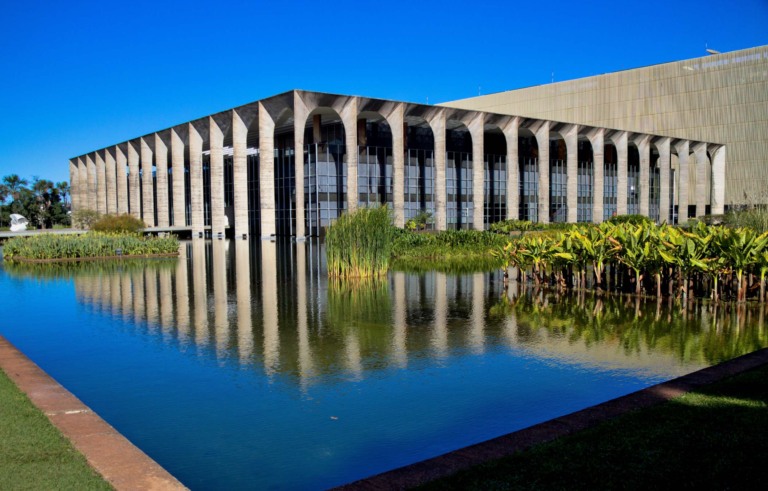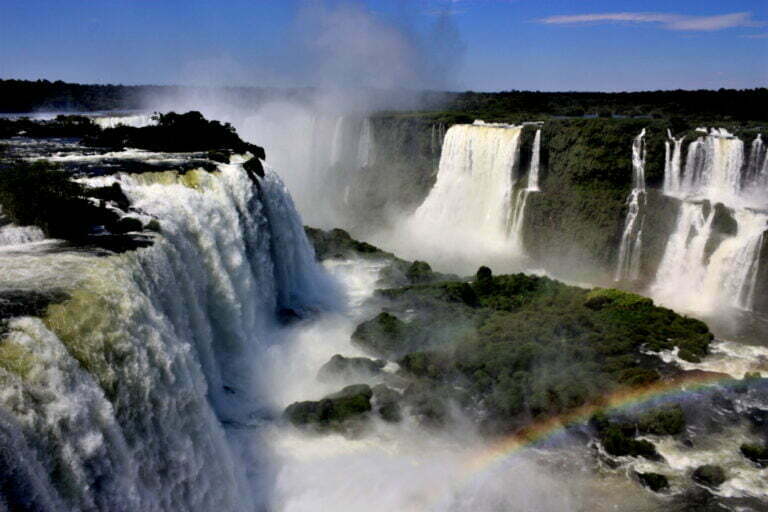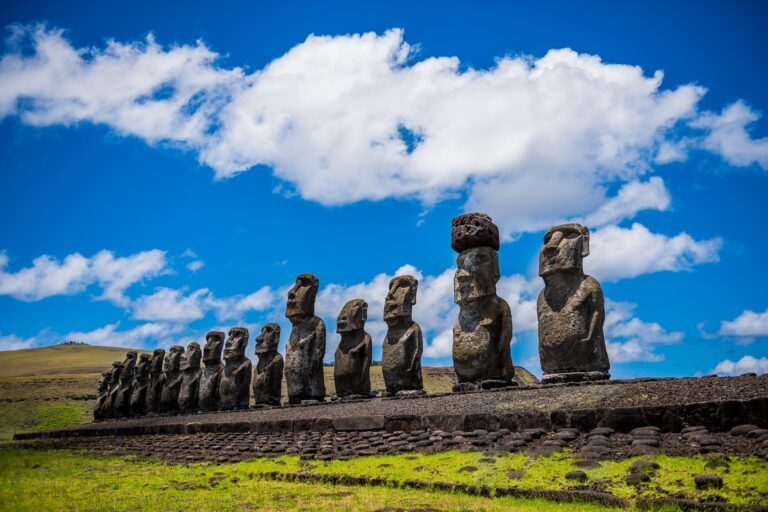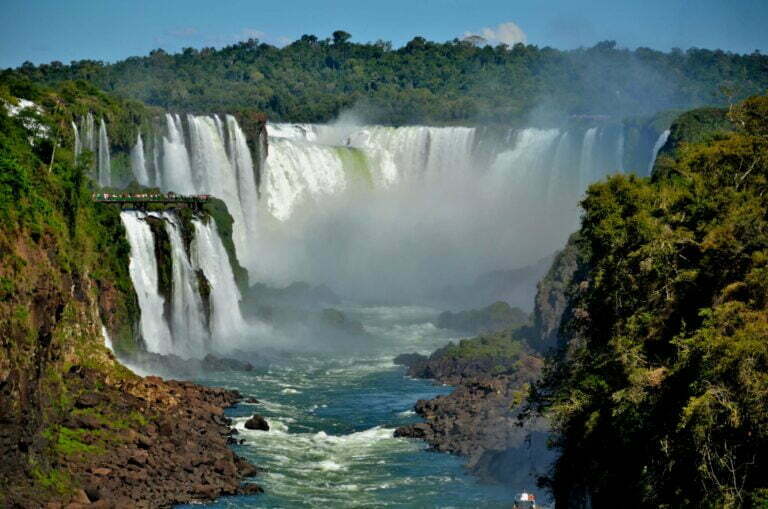Machu Picchu was abandoned by the Inca civilization during the Spanish conquest in the 16th century and was largely forgotten. Machu Picchu is an ancient Inca citadel located in the Andes Mountains of Peru. It is one of the most famous and well-preserved archaeological sites in the world, and it is often referred to as the “Lost City of the Incas.” Here are some key facts and information about Machu Picchu:
Machu Picchu Facts And History
1. Location: Machu Picchu is situated in the Cusco Region of Peru, about 50 miles (80 kilometers) northwest of the city of Cusco. It is located at an altitude of approximately 7,970 feet (2,430 meters) above sea level. Machu Picchu, often referred to as Machupijchu, is a historic sanctuary featuring well-preserved Inca ruins. This archaeological wonder is nestled within the Cordillera de Vilcabamba in the Andes Mountains.
2. Elevation: It finds its location perched between two towering peaks, Old Peak (Machu Picchu) and New Peak (Huayna Picchu), both standing at an elevation of 7,710 feet (2,350 meters). The total area of the sanctuary covers about 326 square kilometers, with the ruins themselves occupying approximately 5 square kilometers.
3. History: Machu Picchu was built by the Inca Empire in the 15th century, during the reign of the Inca emperor Pachacuti. It served as a royal estate and a religious retreat. The exact purpose of the site is still a subject of debate among archaeologists and historians.
4. Historical Significance: Machu Picchu’s historical significance has been further clarified through multiple excavations, with insights gained from researchers such as Luis E. Valcarcel and Paul Fejos in the early 20th century. It has been revealed that the site likely served as a royal retreat, and its construction is attributed to Inca king Pachacuti Yupanqui, who ruled from 1438 to 1471.
5. Architecture: The site is known for its remarkable Inca stone construction, with precisely cut and fitted stones that fit together without the use of mortar. The architecture includes temples, terraces, plazas, and residential buildings.
6. Design: Machu Picchu is divided into two main areas: the agricultural sector, which includes terraced fields, and the urban sector, with its impressive stone structures. Notable structures include the Temple of the Sun, the Intihuatana stone (a ritual stone associated with astronomy and timekeeping), and the Room of the Three Windows.
7. Layout of Machu Picchu: The mystery surrounding the site’s abandonment remains, although a lack of water is one possible explanation. Today, the layout of Machu Picchu impresses visitors, featuring terraced farms, aqueduct systems, plazas, living areas, terraces, a cemetery, and the main buildings, all interconnected by stone walkways. Notably, the Sacred Rock (also known as the Temple of the Sun), the Military Tower, the Acropolis, the Temple of the Three Windows, and the Intihuatana (Sun Hitching Post) are some of its prominent structures.
8. Tourism: Machu Picchu is one of the most popular tourist destinations in the world. The site has a daily visitor limit to help preserve its integrity, and it is important to follow conservation guidelines when visiting. Visitors can access the site by taking a train to Aguas Calientes and then a bus to the entrance of the archaeological complex.
The site’s unique beauty and historical significance continue to captivate visitors, making it a must-see destination in Peru. To help preserve its integrity, visitor numbers are limited, and careful conservation measures are encouraged.
9. Hiking Trails: There are several hiking trails that lead to Machu Picchu, with the Inca Trail being the most famous, which offers a multi-day trekking experience. Other routes, like the Salkantay Trek and the Lares Trek, offer different experiences for those who enjoy trekking.
10. Forest Fire: While Machu Picchu was briefly threatened by a forest fire in 1997, quick rebuilding efforts ensued. Concerns about the impact of tourism and the proposed construction of a cable car link to the site have also been raised in recent years. Regardless, Machu Picchu remains an enduring testament to the architectural and engineering prowess of the Inca civilization, as well as a symbol of Peru’s rich history.
11. UNESCO World Heritage Site: Machu Picchu was declared a UNESCO World Heritage Site in 1983 in recognition of its historical and cultural significance. It is also considered one of the New Seven Wonders of the World.
Machu Picchu History
12. Pre-Columbian Ruins: Machu Picchu is one of the few sizable pre-Columbian ruins that have been remarkably well preserved. While the Spaniards did not discover it, there are historical records suggesting that a German explorer named Augusto Berns may have visited it in 1867.
However, the site remained largely unknown in the Western world until 1911, when Hiram Bingham, a professor from Yale University, rediscovered it with the guidance of a local named Melchor Arteaga, who spoke Quechua. Bingham’s initial quest was to locate Vilcabamba, the “lost capital of the Incas,” where the last Inca kings had led a rebellion against Spanish rule from 1572 to 1572.
13. Excavation: In 1912, Bingham presented findings from his excavations at Machu Picchu, funded by Yale University and the National Geographic Society. Although many scholars no longer support Bingham’s claim that this was the lost capital of the Incas, the term persists in various publications.
Subsequently, Vilcabamba was connected to Espiritu Pampa, another archaeological site discovered by Bingham. In 1964, American explorer Gene Savoy conducted extensive exploration in the Espiritu Pampa area, revealing the remains of 300 Inca homes and numerous other structures, indicating that it was once a larger settlement.
Machu Picchu has undergone multiple rounds of excavation, notably by Bingham in 1915, Peruvian archaeologist Luis E. Valcarcel in 1934, and Paul Fejos in 1940 and 1941. Further research in the Cordillera de Vilcabamba has shown that Machu Picchu was one of many Inca fortifications, traveler’s inns, and signal towers along the Inca foot road.
14. Pachacuti Inca Yupanqui: The construction and artifacts discovered indicate that the site was likely established between the mid-1500s and the early to mid-1600s under the rule of Inca king Pachacuti Yupanqui. While the initial belief was that Machu Picchu was inhabited by the “Virgins of the Sun,” who were esteemed women in Inca society, more recent findings suggest a diverse population, including men.
15. Abandonment: The exact reason for the site’s abandonment remains a mystery, but a shortage of water is one possible factor. Visiting Machu Picchu offers a unique opportunity to explore the history and culture of the Inca civilization while enjoying breathtaking mountain scenery. It remains a symbol of Peru and a testament to the engineering and architectural skills of the Inca people.







